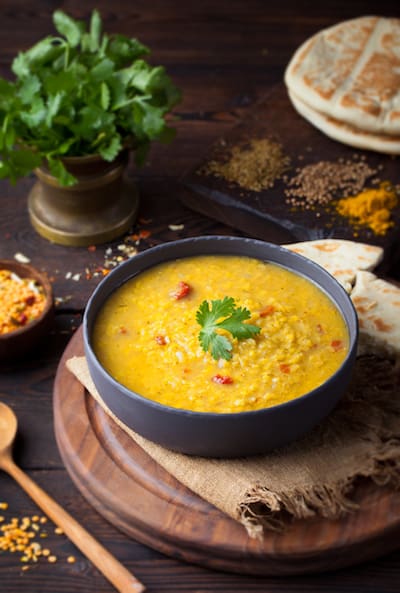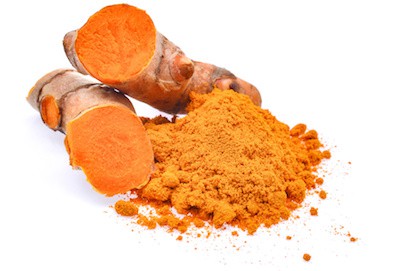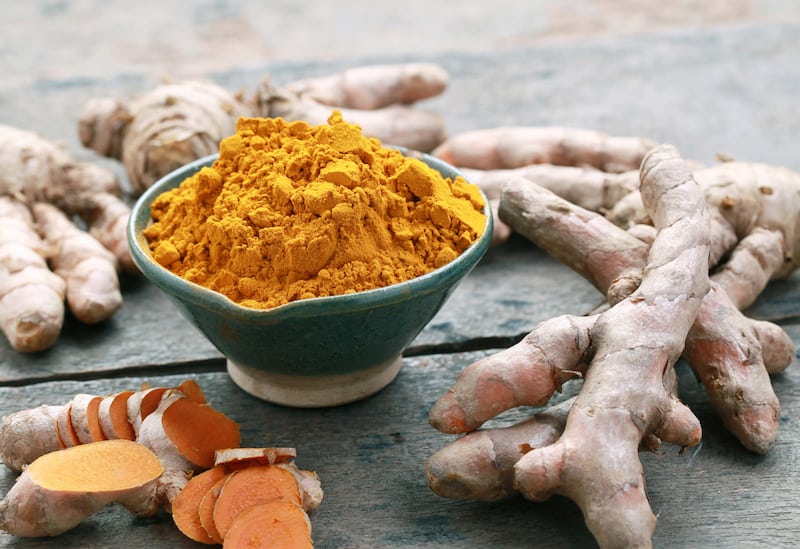What is Turmeric?
Turmeric has quickly gained a name for itself as one of the most popular superfoods that are currently available on the market. It is also generally considered to be one of the most powerful herbs on the entire planet. Scientists already know for definite that turmeric has the ability to fight, and potentially reverse, a lot of modern diseases. This is due to the number of healing compounds that turmeric contains, especially curcumin. More than 10,000 peer-reviewed articles have successfully proven the benefits that come with consuming curcumin.
Turmeric itself is a type of rhizomatous herbaceous perennial plant, also known as Curcuma longa. The plant itself belongs to the ginger family, Zingiberaceae, a family of flowering plants. Rhizome refers to the subterranean stem of a plant, and herbaceous means that the plant has no woody stem above the ground. Perennial means that the plant has the capability to live for more than two years at a time.
The plant grows as a native across Southeast Asia, as it needs a rather specific environment to thrive in. This includes a moderate temperature and a considerable amount of rainfall. The rhizomes of theCurcuma longaplant are gathered on an annual basis. Sometimes these rhizomes are used fresh, but more often than not they are turned into the yellow-orange powder that we recognize turmeric to be.
This is done by boiling the turmeric for 30 – 45 minutes, before drying it out in ovens. It can then be ground into the famous powder that is commonly used as a flavoring in a number of Central and Southeast Asian cuisines. It can also be used for dyeing fabric.
The Origin of Turmeric

Turmeric in Indian food gives distinguished color and taste.
Curcuma longa, or turmeric, has been used as both a food source and a type of medicine across Asia for thousands of years. It has played a major part in a number of different medical ideals, and it is still collected today for its medicinal properties. Throughout history, it has been used in a number of different savory and sweet dishes.
There are four different medical styles that have used turmeric for its medicinal properties. The first style is known as Ayurveda, which came from the Indian subcontinent. The second style is known as Siddha Medicine, which is a system of traditional medicine that originated in ancient Tamilakam in South India. Both of these practices used turmeric as a treatment for a variety of different ailments. These included indigestion, throat infections, the common cold, and a variety of different internal problems. It was also used as a topical medication, to cleanse wounds.
The third medicinal style is rather unique, as it is called Yunani. It is a type of Persian-Arabic traditional medicine that is still practiced in Mughal India and Muslim culture across modern day Central Asia. The system is based on the teachings of Greek physicians Hippocrates and Galen.
The last style is commonly known as Traditional Chinese Medicine, a system that is still commonly practiced today. This style is still used throughout the world today, to treat a variety of different ailments. It is informed by modern medicine and scientific values, yet it has been built on a foundation of more than 2,500 years of Chinese medical practice.
This all means that turmeric has been used for its medicinal properties for over four millennia, in a number of different places across the world.
Health Benefits of Turmeric
Turmeric is an important type of superfood, as its existence as a type of medicine has already been proven to exist in a number of different scientific studies. It has been efficiently linked to fighting and reversing a number of different diseases. Most of the studies that are undertaken actually involve the main healing compound that can be found in turmeric, curcumin.
Curcumin is actually the exact property that has given turmeric its superfood status, as it can perform wonders within our body. It has the capability to fight inflammation, and it is also an antioxidant that can help get rid of free radicals inside of our bodies. Free radicals are never good, as they are a byproduct of oxidation, and they involve single electrons damaging the cells in our body. Curcumin can also be used to manage arthritis, and to help fight cancer.
In a number of medical studies, curcumin has been proven to have similar effects on the body as a variety of different medications do. Without the side effects that often come with medication. These include anti-inflammatory medication, chemotherapy, painkillers, and antidepressants.
The Downside of Turmeric
Turmeric is generally considered to be completely safe, as long as it is taken in medicinal amounts. The thing that you have to remember about consuming turmeric is that it one of a number of main ingredients in a number of different cuisines. It is eaten frequently in Bangladesh, India, Indonesia, Iran, and Pakistan on a regular basis.
Some people have reported slight allergic reactions when they use turmeric to treat skin conditions. It would be advisable to do a small patch test before covering your face in turmeric, to ensure that it does not result in an itchy rash. High doses of turmeric have also been known to cause slight nausea.
You should always check with your doctor before adding a large amount of turmeric to your diet, simply because there are certain anti-coagulants like aspirin and warfarin that may not work as well as they would without an excessive dose of turmeric.
Nutritional Value of Turmeric
In approximately 100g of turmeric, you will find:
| Energy | 354 kcal | Carbohydrates | 64.9g |
| Protein | 7.83g | Total Fat | 9.88g |
| Fibre | 21g | Niacin | 5.14mg |
| Pyridoxine | 1.80mg | Riboflavin | 0.233mg |
| Vitamin C | 25.9mg | Vitamin E | 3.10mg |
| Sodium | 38mg | Potassium | 2525mg |
| Calcium | 183mg | Iron | 41.42mg |
| Magnesium | 193mg | Manganese | 7.83mg |
| Phosphorus | 268mg | Zinc | 4.35mg |
This all means that turmeric contains a really good amount of essential minerals, and it can be relied upon to boost the immune systems if a boost is needed. It can also be a really good supplement to take during pregnancy when your body needs all of the nutrients that it can get.
5 Best Health Benefits of Turmeric
-
Turmeric can be used as a successful anti-inflammatory.
The curcumin in turmeric can be used to successfully control inflammation within the human body. It has the ability to do this to a standard that is much higher than that of standard anti-inflammatory medication. One study actually managed to find that aspirin and ibuprofen were the least effective anti-inflammatories, while curcumin was one of the highest on the list(1). The anti-inflammatory properties of curcumin have also been investigated as a potential treatment for Alzheimer’s Disease(2). A number of different studies have been done to evaluate this matter, and they have been inconclusive. Hopefully, further tests will shine a light on a potential cure for Alzheimer’s Disease. It is worth noting that the Central and Southeast Asians who consume a lot of turmeric have a significantly lower rate of Alzheimer’s Disease when compared to people who consume other diets.
-
Turmeric can be used to treat a wide variety of common skin conditions.
Treating different skin conditions can be both difficult and troublesome. More often than not the specialist eye of a dermatologist is required, to evaluate your system fully. Turmeric can actually be used to treat a number of skin conditions that would otherwise need a dermatological assessment. This is because of both the anti-inflammatory and antioxidant properties that can be found in curcumin. They have the ability to speed up wound healing, calm pores, and control the flare-ups that are associated with psoriasis(3).
It is worth noting that you should always do a patch test before rubbing turmeric across your face. This is because it has a slim chance of causing an allergic reaction. Most people advise that you do your patch test 24 – 48 hours before adding turmeric to your skin care routine.
-
Turmeric has the potential to be used as a successful cancer treatment.
Scientists have managed to prove that turmeric could be a successful treatment for a number of different types of cancer. When scientists look at the healing nature of a food source, they often see if they can link it to cancer. This is because of how important it actually is to try and find a cure. Cancer Research UK has said that early trials involving turmeric have shown a number of promising results(4). Laboratory studies have also shown that turmeric does have a number of anticancer effects on cancer cells. It seems like turmeric is most effective when involved in the treatment for breast cancer, bowel cancer, stomach cancer, and skin cancer.
-
Turmeric can be used to treat a number of gastrointestinal problems.
People that suffer from a gastrointestinal problem, be it IBS or Crohn’s Disease, will know just how troublesome they can be. A lot of people who suffer from gastrointestinal problems struggle to take medication for their conditions, due to the side effects that can come with it. A study was done to evaluate how curcumin would interact and manage a number of different inflammatory bowel disease conditions, it resulted in a number of patients being able to stop taking their corticosteroids due to an improvement in their condition(5). For a large number of patients, the use of corticosteroids does more damage than good, as it damages their intestinal lining over time. This means that curcumin can be used to treat the condition, without resulting in the same set of side effects(6).
-
Turmeric can be used as a successful painkiller.
A lot of research has been done in the past to find a natural painkiller, due to the side effects that are associated with the modern way of managing pain. Scientists across the world have accepted that curcumin could be used to manage pain in exactly the same way that a standard painkiller is. It was found that curcumin naturally activates the opioid system in diabetic rats, triggering an inherent pain-relieving response(7). The U.S. Army Institute of Surgical Research has also published a study that shows how it could be used to treat burn victims, who would otherwise need to be treated with a range of dangerous opioids and nonsteroidal anti-inflammatories(8).
How do you use turmeric?

Turmeric root and powder
Turmeric is an incredibly easy product to incorporate into your diet, especially if you enjoy experimenting with your food. Science has found that turmeric is most beneficial when it is consumed as part of a healthy diet and a healthy lifestyle, as your body will never be 100% healthy unless everything else is balanced too.
Experimenting with Central Asian and Southeast Asian cuisine is one of the easiest ways to add turmeric to your diet, as a lot of the dishes (especially curries) contain turmeric. It is used as both a flavoring and a coloring. Another option is to drink turmeric tea, which is made by boiling several cups of water and adding 2 teaspoons of turmeric. You simply have to let it boil for a quarter of an hour, before straining it and adding other things to it. A lot of people add juice, honey, and milk.
Pretty much everyone can benefit from adding turmeric to their diet, as it has a lot of anti-inflammatory and antioxidant properties that we all need.
What should you think about when you buy turmeric?
There are some people in the world who are lucky enough to consume turmeric while it is still in its natural form, although this can be incredibly hard to find unless you know where to look. Most people use turmeric after it has been boiled, dried, and ground to create a vibrant yellow-orange powder. When purchasing turmeric as a powder you should always make sure that it is organic with no added ingredients. A dull color would suggest added ingredients, as the color of natural turmeric is bright.
Be careful if you choose to take a supplement that includes turmeric as an ingredient, as a lot of supplements also contain additional properties that we would not recommend you consume. If you do want to take it in a supplement form, then you should make sure that you do a lot of research into the particular brand first.
Is Turmeric Really a Superfood?
A superfood is generally defined as a product that offers an incredibly high nutritional profile with a small number of calories, but turmeric is slightly different. It does offer a high nutritional profile with a small number of calories, but most people would recognize it as a superfood because of the medical benefits that it can offer after consumption.
Turmeric has been used for the medicinal qualities of curcumin for more than four millennia, traveling across different continents and still been seen for the medicinal qualities that it held. It was used in medicine across India, Central Asia, and China. It is still collected today to be used in that way, and the medicinal success that it has had in herbal medication has led to a large number of scientific studies that have been conducted into the use of curcumin today.
It really is the most powerful herb on the planet, with the power to cure so many different ailments. It can be used to treat skin conditions and to treat gastrointestinal illnesses. It can also be used as a painkiller and it has proven its worth in the field of cancer studies. Hopefully, it will one day be the foot forward that we need to cure Alzheimer’s Disease.
Everyone could benefit by adding turmeric to their diet. Most medications have side effects, yet turmeric can cure ailments without the harshness that comes with modern day medication.






